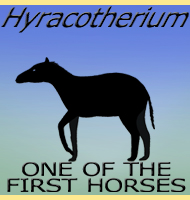


Artiocetus
Name:
Artiocetus.
Phonetic: Ar-te-o-see-tus.
Named By: P. D. Gingerich, M. Haq, I.
S. Zalmout, I. H. Khan & M. S. Malkan- -
2001.
Classification: Chordata, Mammalia, Cetacea,
Archaeoceti, Protocetidae.
Species: A. clavis (type).
Diet: Carnivore.
Size: Skull about 58 centimetres long.
Known locations: Pakistan - Domanda Formation.
Time period: Lutetian of the Eocene.
Fossil representation: Complete skull and partial
post cranial remains.
Artiocetus
was an important transisitional find because individuals of this genus
still possessed artiodactyl-like ankles. In modern palaeontology
whales have long been thought to have descended from land living
artiodactyl ancestors, specifically anthracotheres, and the
observation of artiodactyl ankles in a primitive whale is further proof
of this theory.
Although
a whale
ancestor, Artiocetus still possessed four
limbs, though it
is already clear that adaptations for a more marine lifestyle were
being made at the expense of terrestrial adaptations. Artiocetus
would have been similar to other primitive whale ancestors such as
Rodhocetus.
Further reading
- Origin of whales from early artiodactyls: Hands and feet of
Eocene Protocetidae from Pakistan, P. D. Gingerich, M. Haq,
I. S. Zalmout, I. H. Khan & M. S. Malkan- -
2001.
----------------------------------------------------------------------------
Random favourites
 |
 |
 |




